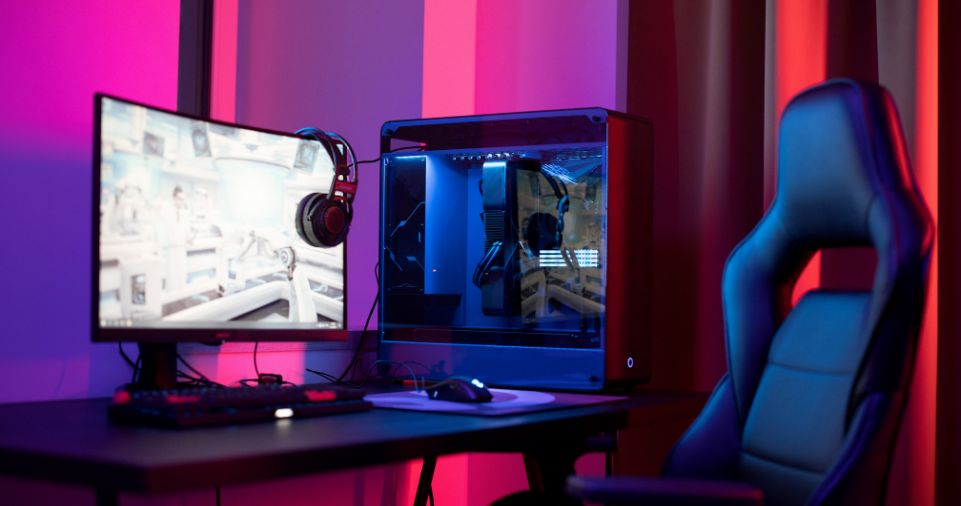Your nonprofit organization or library depends on software to do its tasks, and unexpected program failures and error messages might put a stop to your operations. It’s tempting to contact tech support right away when this occurs. There are simple actions you may take to fix software issues on your own, or at the very least to identify their sources, before you make the decision.
Use the troubleshooting techniques given below in the order they are stated below the next time you experience a software issue. Keep careful records of the actions you do. In this manner, if a call to tech assistance is required,
1. Free up RAM by closing other open programs.
Every software program makes advantage of Random Access Memory (RAM). Your computer utilizes more Memory the more programs it has open. If you’re using older computers with limited Memory, this may be a particular difficulty. Hence, the first thing to do if a software program won’t start or is operating slowly is to shut all other open programs.
Both the Windows and Macintosh operating systems (OS) provide tools that show you which open programs could be using up all of your RAM:
- Press Ctrl+Alt+Delete on Windows, then select the Launch Task Manager option. Click the Processes tab, then select the Memory menu option from the box that displays. Based on how much RAM each open process is using, all of them are sorted in this manner. By selecting the End Process button, you may end a runaway process. To make sure you don’t unintentionally halt a crucial process or program, you might want to perform some study about the procedure before you do that.
- Use the Activity Monitor on Mac OS X. (called the Process Viewer in older versions of OS X). Go to Programs > Utilities to get to the Activity Monitor. When launching the Activity Monitor, arrange applications according to RAM utilization by selecting the column that says “RAM Usage.”
2. Restart the software.
Software issues might result from a clash with another application or just from issues the software ran into when it first started. These problems can occasionally be fixed by restarting the software.
Also Read: Instagram is bringing ads to search results and launching ‘Reminder Ads
3. Shut down and restart your computer.
Try restarting your computer if restarting the troublesome software doesn’t fix the problem. Reopen the problematic program to determine whether the issue has been fixed when the machine has completely rebooted.
4. Use the Internet to find help.
Any software issues you have are likely to have been experienced by someone else. So, there is a strong probability that you can get assistance online. These are some starting points:
- Look for solutions: Include the name and version of the software application, the issue you ran into, and the circumstances surrounding it in your search engine inquiry. If you encountered a particular problem message, be sure to include the name of the program and the precise error message wording.
- Look at the vendor’s website: The majority of software suppliers offer some sort of product support, whether it is FAQs, product documentation, or user forums.
Visit further websites: Several websites that provide technology education are included in TechSoup’s page Learning About Technology Online.
5. Undo any recent hardware or software changes.
Software issues can occasionally result from changes to hardware and software, such as:
Also Read: Bing allows users to generate images using ‘very latest DALL-E models’
- Software conflicts: Recently installed software may clash with other programs. For instance, Symantec Norton Antivirus could clash with other antivirus software. Hence, deleting the additional antivirus application may fix your issue if Norton Antivirus suddenly stopped functioning properly after you installed it.
- modifying the computer’s settings Restart the app after making any recent modifications to your computer’s settings. For instance, the “Set Program Access and Defaults” option in the Windows Control Panel enables you to restrict access to particular programs. It might not run if you unintentionally disable access to a software here.
6. Uninstall the software, then reinstall it.
Critical program files may occasionally be changed, destroyed, or removed causing software issues. For instance, a lot of Windows programs require Dynamic Link Library (DLL) files to carry out simple operations.
Also Read: Kakao Mobility picks up ‘super app’ startup Splyt, once backed by SoftBank and Grab
- The same DLL file is frequently used by many apps. It’s conceivable that you deleted DLL files that another software depended on if you just uninstalled a program from your computer. The addition of a software can also update or add DLL files. Programs that rely on certain DLL files may experience instability or stop functioning altogether.
- You can totally uninstall the faulty software, then reinstall it to make sure that all essential files are present. It’s a good idea to check your registry even if you uninstall a software using its built-in uninstall procedure (if it has one).
- Check to see whether a new version of the software is available before reinstalling. It’s possible that the vendor or developer has made bug patches that remedy the problem you’re experiencing.
Software developers can also remedy known issues by releasing patches, which are brief program upgrades. There could be a more recent patch available for the program you’re running, even if it’s the most recent version.
8. Scan for viruses and malware.
Software can freeze, crash, or stop functioning altogether due to viruses, spyware, and other types of harmful software (often referred to as “malware”). You could also wish to check the computer with antivirus and anti-malware applications to discover and eliminate viruses and malware if recommendations 1 through 8 haven’t been able to fix your software issue. If the antivirus or anti-malware applications discovered any dangers, make sure to restart your computer and use the most comprehensive scan mode possible.
9. Check for a firewall conflict.
Instead of a centralized hardware or software-based firewall, some firms may decide to install personal firewall software on each computer. Although they can be a crucial line of protection against hackers and other security risks, personal firewalls can also lead to software disputes.
Also Read: Aspecta nabs $3.5M to build AI-vetted coder profiles
Messages from firewalls usually inquire whether they should let a program operate or prevent it. As a result, it is possible for the personal firewall to unintentionally be instructed to prevent an application from launching. To discover if the troublesome software has been added to the firewall’s list of applications to block, check the firewall’s settings. If so, modify the firewall’s settings to let the program to function, then determine if you’re still experiencing software problems.
10. Boot up in Safe Mode.
There are several software flaws that can be brought on by OS settings or other system issues. Both the Windows and Mac operating systems have Safe Mode, a troubleshooting setting. Safe Mode turns down non-essential programs and processes, which should make it simpler to pinpoint issues.
By hitting the F8 key while your computer is loading up, you may access Safe Mode on the majority of Windows machines. When your computer boots up on a Mac, press the Shift key to enter Safe Mode (or immediately after it boots up).
Also Read: Big Data’s cloud backlash, CVC pitch tips, de-risking hardware startups
Launch the troublesome software once Safe Mode has been selected on your computer and attempt to reproduce the issue you encountered in normal mode. If the issue isn’t present in safe.
11. Defragment your hard drive.
You may choose to defragment the hard disk of your computer as a last resort. The file structure on your hard drive is reorganized during defragmentation to improve system performance. While defragmenting is intended to make your entire system perform quicker, it will likely be most helpful if your computer is generally slow. To defragment a hard disk, keep in mind that Windows-based PCs are the main exception.
A disk-defragmentation program is included in the majority of current Windows versions, including XP, Vista, and Windows 7. Start > All Programs > Accessories > System Tools > Disk Defragmenter will open it. You should defragment your hard disk when you will be gone from your computer for a few hours because this process might take a while.
Conclusion
It might be time to call tech support if none of the aforementioned suggestions have been able to fix your software issue. By outlining the troubleshooting actions you have previously tried on your own, you will at the very least be able to assist them in focusing their search for the issue.
The Creative Commons Attribution-NonCommercial-NoDerivs 4.0 International License governs the publication of this work.







